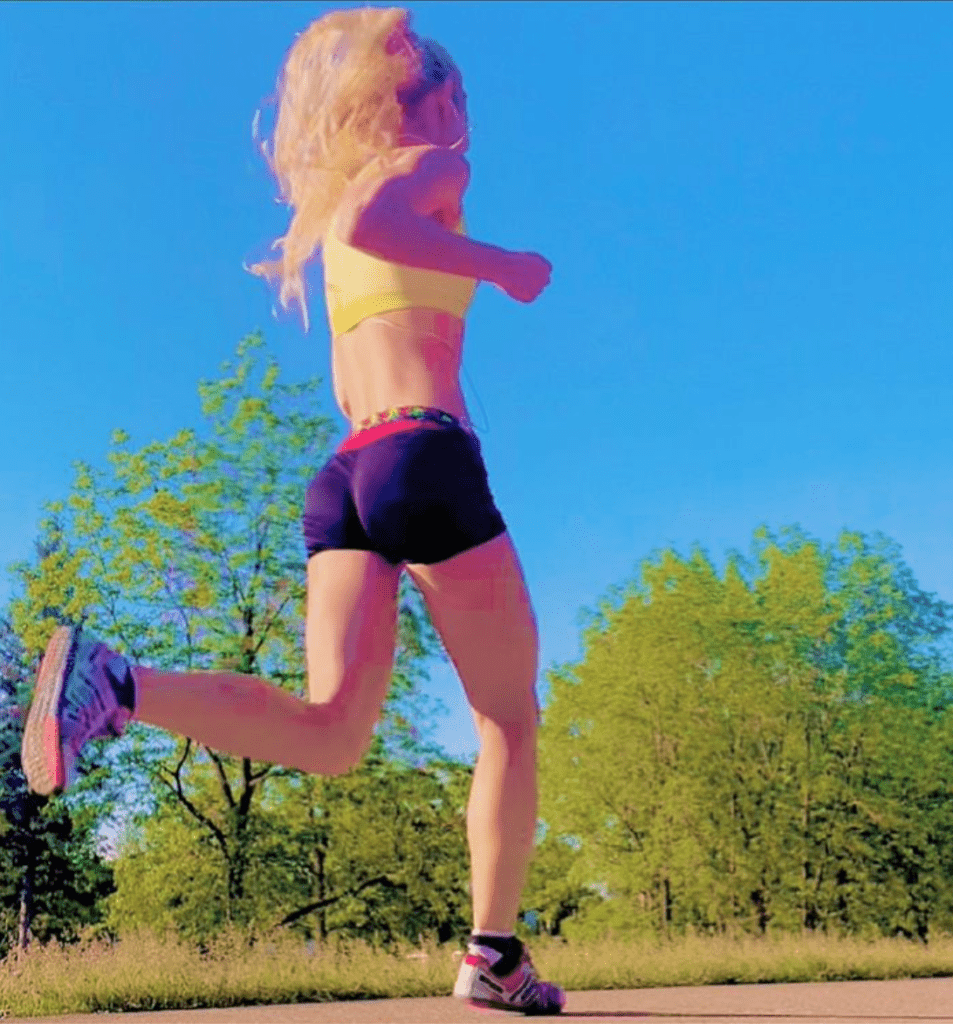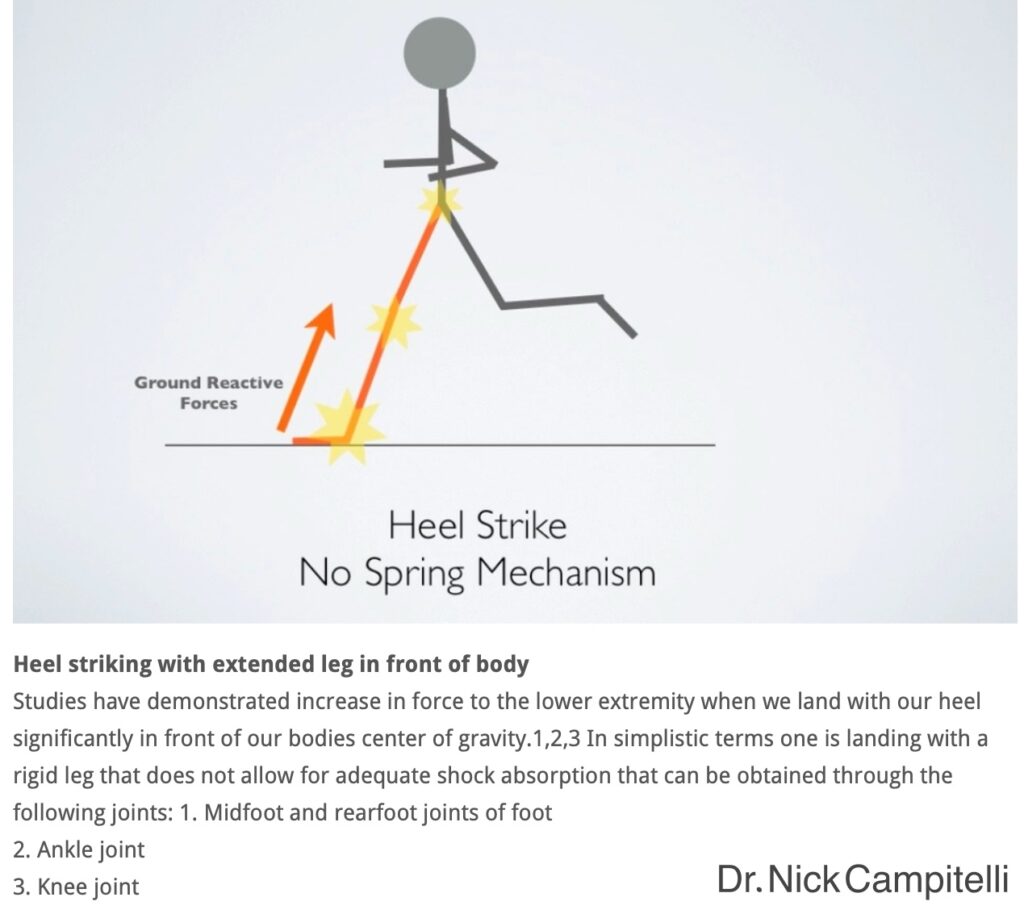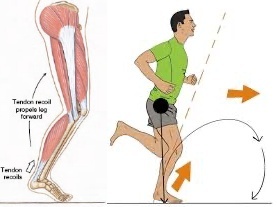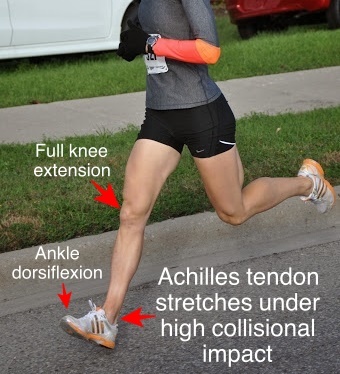The research is quickly piling up showing that heel strike runners suffering from knee pain, hip pain or lower back pain have full resolve of these injuries when they switch to forefoot running.
There are no studies showing the opposite in that there’s no research showing forefoot runners suffering from a long-list of injuries had full resolve of these injuries when they switched to heel strike running. Its always forefoot running curing the injuries caused by heel strike running. Never the other way around! This is because heel strike running produces all of the risk factors that cause most injuries whereas forefoot running prevents these injurious risk factors, which is why forefoot running makes it easier to avoid injuries on a consistent basis than heel strike running.

One issue I have however is that there are some studies that get one big thing wrong about forefoot running in that it’s theorized, and I emphasize the word theorized because it hasn’t been proven at all, that one injury a heel strike runner may suffer if they switch to forefoot running is an Achilles tendon injury. The reason this is only theorized is because some research shows that when a heel strike runner switches to forefoot running, the Achilles tendon becomes more active, and because the tendon is more active, it’s therefore vulnerable to injury. This is a false assumption because the reason the Achilles tendon is more active in forefoot running is because it is participating more as an energy-saving spring while at the same time, forefoot running engages mechanical mechanisms, like controlled foot pronation and reduced ground-contact time, of which taken together, works better in safeguarding the tendon than heel strike running!
More specifically, the Achilles tendon is more active in forefoot running because it stores and releases more elastic energy. In fact, efficient storage of elastic energy in the Achilles tendon is more optimized in forefoot running. The advantage of this is it makes your stride more spring-enabled which increases metabolic savings in the muscles because the muscles perform less mechanical work to move the body forward through each step (shown above). Because there’s more elastic energy loaded into the Achilles when you land with a forefoot strike, is why forefoot runners look lighter on their feet and move more effortlessly. This is because they’re using less muscular effort than heel strike runners.
Heel strike runners show more intensive muscular efforts because landing heel-first when running reduces elastic energy use in the Achilles tendon, making the stride less spring-enabled and therefore, more costly muscular effort is needed to accelerate the body forward.
The reason the Achilles tendon is an ineffectual spring in heel strike running is that, quite often, landing squarely on the heel when running results in a much more extended leg at touchdown with the foot landing too far in front of the hips, which is the centre of mass (shown above). This landing configuration impairs the spring properties of the Achilles because the tendon is stretched and locked out at landing and is unable to slacken under the load stimulus (the load stimulus being the centre mass, or the hips). This is how the spring properties of the Achilles tendon is impaired in heel strike running, but that’s hardly the worst of it!

Heel striking when running also imposes higher rates of vertical impact and compressive loading as well as bending strain and torque on the Achilles tendon, which is why Achilles tendon injury is consistently associated with heel strike running. This distress on the Achilles tendon is perfectly prevented in forefoot running!
As mentioned earlier, forefoot running is significantly safer on the Achilles tendon because, for one, there are less all-around impact forces and physical stressors on the Achilles. For another, there’s more controlled foot pronation, which means the back of the heel is less likely to shift into extreme, overstraining positions. This is because in a forefoot strike landing, the initial contact area of the foot is larger since initial foot placement is flatter which puts a firmer hold on the foot during stance. Ground-contact time of the foot is also shorter which reduces the amount of time for unwanted foot motions to occur, thereby making it easier for the Achilles to avoid mechanical stress.
The Take Home Message
The primary role of the Achilles tendon is to act as a spring for running more economically whereby the mechanical components of forefoot running does a better job for the Achilles to be more active as an energy-saving spring, which is not a risk factor for injury! Just because the Achilles is being used differently in forefoot running than in heel strike running, does not mean that this difference in use is a risk factor for ongoing injury to the tendon, as some studies will mislead you to believe!
Forefoot running engages the Achilles tendon in the way that it should be engaged whereas in heel strike running, the tendon is not being used properly since its spring properties are negatively altered while enduring excessive levels of damaging impacts.
Lastly, and most importantly, if a heel strike runner switches to forefoot running, and if an Achilles injury arises, this injury is the result of all the years spent heel strike running in cushioned heeled shoes that’s already made the tendon vulnerable to injury. It has nothing to do with the switch to forefoot running! Just like anything, the tendon needs time to adapt. Once the tendon adapts, the threat of injury is not a worry in forefoot running!
If you’ve enjoyed this blog post, you’ll love my YouTube Channel: here, where I discuss the health and performance benefits of barefoot running and I also have tons of video reviews of minimalist/barefoot-inspired running shoes suitable for forefoot running!
If you’d like, you can support Run Forefoot and help keep it going by making a donation in any amount of your choosing:
Or, you can also support Run Forefoot by shopping at the following top minimalist shoes brands, and be sure to bookmark the links:
Be Lenka: https://www.dpbolvw.net/click-7600968-14330828
FeelGrounds: https://www.feelgrounds.com/?p=RunForefoot
Xero Shoes: https://xeroshoes.com/go/Run_Forefoot
Iguaneye: https://www.iguaneye.com/?ref=8tfXVc92
Soft Star Shoes: https://shrsl.com/3mp1b
Wilding Shoes: https://bit.ly/3lIygQP
Earth Runners: https://earthrunners.com/?rfsn=6763579.f7f9c9
Vivobarefoot: https://shrsl.com/3kvih
Zappos: https://goo.gl/J1CeA
Bretta Riches
BSc Neurobiology; MSc Biomechanics candidate, ultra minimalist runner & founder of RunForefoot. I was a heel striker, always injured. I was inspired by the great Tirunesh Dibaba to try forefoot running. Now, I'm injury free. This is why I launched Run Forefoot, to advocate the health & performance benefits of forefoot running and to raise awareness on the dangers of heel striking, because the world needs to know.
Latest posts by Bretta Riches (see all)
- Can You Run In Barefoot Shoes? Yes, But DON’T Heel Strike! - 21/07/2024
- Why Cushioned Running Shoes Are Really Bad for Your Feet - 19/07/2024
- Do Cushioned Running Shoes Cause Injuries? - 17/07/2024



